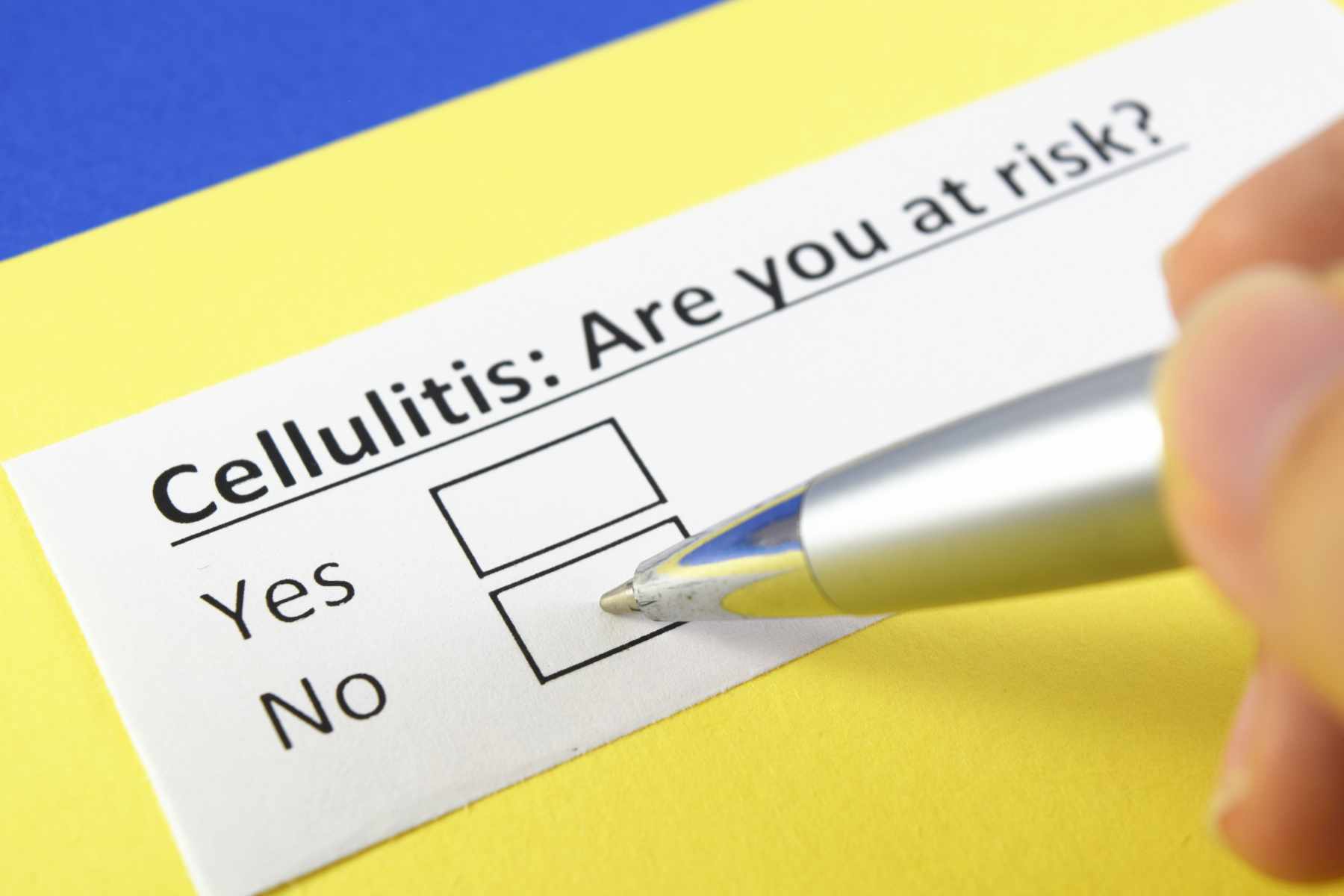Cellulitis
ChatRx uses advanced AI and telemedicine to accurately diagnose the symptoms of cellulitis and prescribe antibiotics as required.
Overview
Cellulitis is a potentially serious bacterial skin infection that occurs when bacteria, usually Streptococcus or Staphylococcus, enter the skin through a cut, scrape, or other break in the skin. This infection can lead to swelling, redness, and pain in the affected area, and if left untreated, it can spread rapidly and cause severe complications.
If you have any symptoms of cellulitis, it’s important to seek treatment right away through our telemedicine doctor chat for quick and safe care.
AI-Powered Symptom Assessment Preview is Now Live!

What is Cellulitis?
- A bacterial skin infection caused by Streptococcus or Staphylococcus bacteria
- Occurs when the bacteria enter the skin through a break or wound
- Leads to swelling, redness, and pain in the affected area
- Can spread rapidly and cause severe complications if left untreated
Causes of Cellulitis
- Breaks in the skin, such as cuts, scrapes, or insect bites, that allow bacteria to enter
- Existing skin conditions that weaken the skin’s natural defenses, like eczema or athlete’s foot
- Weakened immune system due to underlying medical conditions or certain medications
- Poor circulation or lymphatic drainage that impairs the body’s ability to fight infection
Preventing Cellulitis
- Keeping the skin clean and properly caring for any cuts or wounds
- Treating existing skin conditions to maintain the skin’s barrier function
- Maintaining a healthy immune system through a balanced diet and regular exercise
- Wearing protective clothing and avoiding activities that can lead to skin injuries
Red, Swollen and Tender Skin Area?
AI-Powered Cellulitis Treatment Preview is Now Live!
Start Your Cellulitis Assessment Now
Symptoms of Cellulitis
- Redness, swelling, and tenderness in the affected area
- Warmth and pain in the infected skin
- Fever, chills, and general feelings of illness
- Blisters or red streaks spreading from the infected area
- Swollen lymph nodes near the infection site
Treating Cellulitis
- Oral antibiotics, such as cephalexin or clindamycin, to fight the bacterial infection
- Anti-inflammatory medications to reduce swelling and pain
- Keeping the affected area clean and elevated to promote healing
- In severe cases, intravenous (IV) antibiotics may be required
Self-Care for Cellulitis
- Elevate the affected limb to reduce swelling and promote drainage
- Apply warm compresses to the infected area to soothe pain and encourage circulation
- Take over-the-counter pain relievers to manage discomfort
- Monitor the infection for signs of worsening, such as increased redness or fever
- Avoid irritants like smoke and dust
Antibiotics for Cellulitis
- Antibiotics help fight the bacterial infection and prevent its spread
- It’s important to take the full course of antibiotics as directed to ensure the infection is properly treated
Risk Factors for Cellulitis
- Breaks in the skin, such as cuts, scrapes, or insect bites
- Existing skin conditions that weaken theskin’s natural defenses, like eczema orathlete’s foot
- Weakened immune system due to underlying medical conditions or certain medications
- Poor circulation or lymphatic drainage that impairs the body’s ability to fight infection
Summary
Cellulitis is a serious skin infection that requires prompt medical attention. By recognizing the symptoms, practicing preventive measures, and seeking appropriate treatment, individuals can minimize the risk of complications and ensure a speedy recovery.
Frequently Asked Questions
The infected area typically becomes red, swollen, warm, and tender to touch. Unlike simple bruises or scrapes, cellulitis often spreads quickly and may cause fever or chills. The skin might feel tight and appear shiny or stretched.
Not sure about your skin infection? Let ChatRx’s AI medical assessment help identify your condition.
Cellulitis requires prompt treatment as it can spread rapidly through skin layers. Most people need antibiotics within 24-48 hours of first symptoms. Without proper treatment, the infection can become severe and may require hospitalization.
Watch for changes such as:
- Redness extending from the infected area
- Temperature above 100.4°F (38°C)
- Increasing pain or numbness
- Skin feeling warm and appearing very red or dark
- Areas that might develop blisters
While mild cases might improve with antibiotics, proper diagnosis helps ensure appropriate treatment. Simple home care like elevation and warm compresses may help, but antibiotics might be needed to address the infection. Get a quick online diagnosis and prescription through ChatRx’s AI doctor platform.
Recurring cellulitis often happens due to underlying conditions like poor circulation, lymphedema, or chronic skin conditions. Identifying and treating these underlying causes helps prevent future infections.
Most people see improvement within 3-5 days of starting antibiotics, but complete treatment usually takes 10-14 days. It’s important to finish the entire course of antibiotics even if you start feeling better.
While both are skin infections, erysipelas affects the upper skin layers and has clear, raised borders. Cellulitis affects deeper tissue and has less distinct edges. Both conditions need antibiotic treatment.
You can gradually resume activities once fever subsides and pain decreases, typically after 3-5 days of treatment. Avoid activities that might injure the affected area until healing is complete.